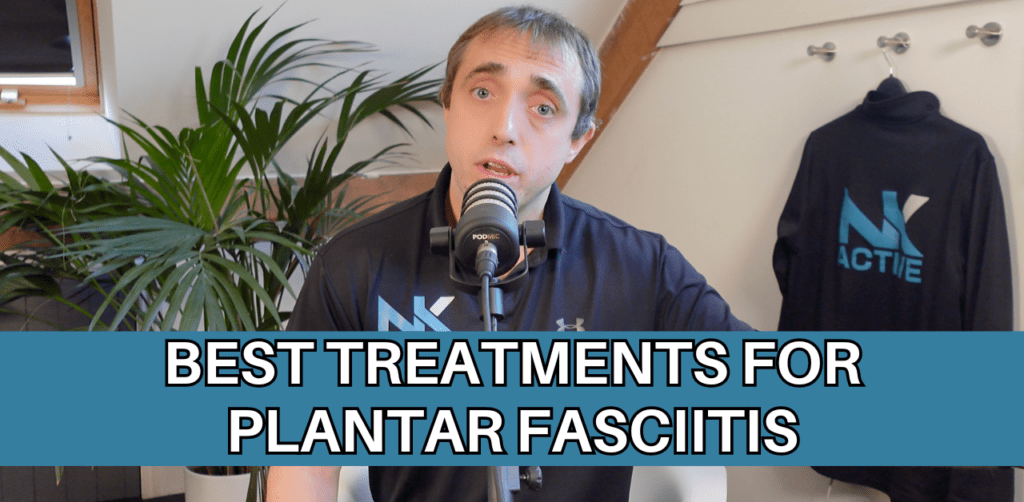
Best treatments for Plantar Fasciitis
Plantar Fasciitis is a common condition causing foot pain, extensively encountered here in our clinical practice at NK Active, including during both in-person and video consultations. This guide aims to offer an overview of Plantar Fasciitis, including its definition, symptoms, and evidence-based treatment options available to our patients.
Understanding Plantar Fasciitis
Plantar Fasciitis is characterised by inflammation or irritation of the plantar fascia, a thick band of tissue that runs along the bottom of your foot from the heel to the front. Common symptoms include:
– Pain on the bottom of the foot, especially around the inside of the heel.
– Pain that is worse in the morning or after periods of rest.
– Discomfort when walking, which might reduce slightly after moving around.
– Increased pain with more exercise, but typically no pain at night or significant swelling.
Evidence-Based Treatment Options
Understanding Plantar Fasciitis is crucial for effective management and prevention of recurrence. Knowledge about the condition empowers patients to take active participation in their treatment plan, which will always facilitate a better overall outcome.
The approach to treating Plantar Fasciitis should be always individualised, it will be different for every person. Let’s look at some of the best treatments for Plantar Fasciitis.
Shockwave Therapy
Shockwave therapy, delivering high-energy sound waves to the heel, has shown significant evidence in reducing pain and facilitating the healing process. Combined with a comprehensive rehabilitation strategy, it speeds up the recovery and return to activity.

Proper Footwear
Footwear plays a critical role in managing Plantar Fasciitis. Shoes with a rocker sole or a stiff sole can reduce strain on the plantar fascia, making activities less painful. Check out our video all about footwear for Plantar Fasciitis here.
Taping
Taping the plantar fascia with rigid zinc oxide tape can offer immediate pain relief and support, although it’s recommended as a short-term solution, not exceeding six weeks. Have you checked out our video on effective taping for Plantar Fasciitis?
Foot Orthoses
The debate between off-the-shelf vs. custom-made foot orthoses continues; however, personalised options might offer better results. The necessity and duration of using orthoses vary by individual, however they are not always a permanent solution. Read more here about foot orthoses for Plantar fasciitis.
Strength and Exercise
While the current body of research has yet to extensively document the benefits of exercises and strength training for Plantar Fasciitis, personalised exercise programs focusing on holistic strength are play a critical role in management. Consistency in performing these exercises is key to effectiveness.
Conclusion
Treating Plantar Fasciitis effectively involves a multifaceted approach, including shockwave therapy, patient education, appropriate footwear, temporary taping, tailored foot orthoses, and a personalised exercise programme.
Future research is expected to further highlight the importance of strength and exercise in the management of Plantar Fasciitis. But remember, the appropriate treatment varies depending on the individual, There is not one singular best treatment for Plantar Fasciitis, which once again shows the need for personalised care plans and why here at NK Active we truly believe in treating the person and not the problem.
Listen to the latest episode of the NK Active podcast here on your chosen platform – https://kite.link/nk-active or watch the YouTube video below.
